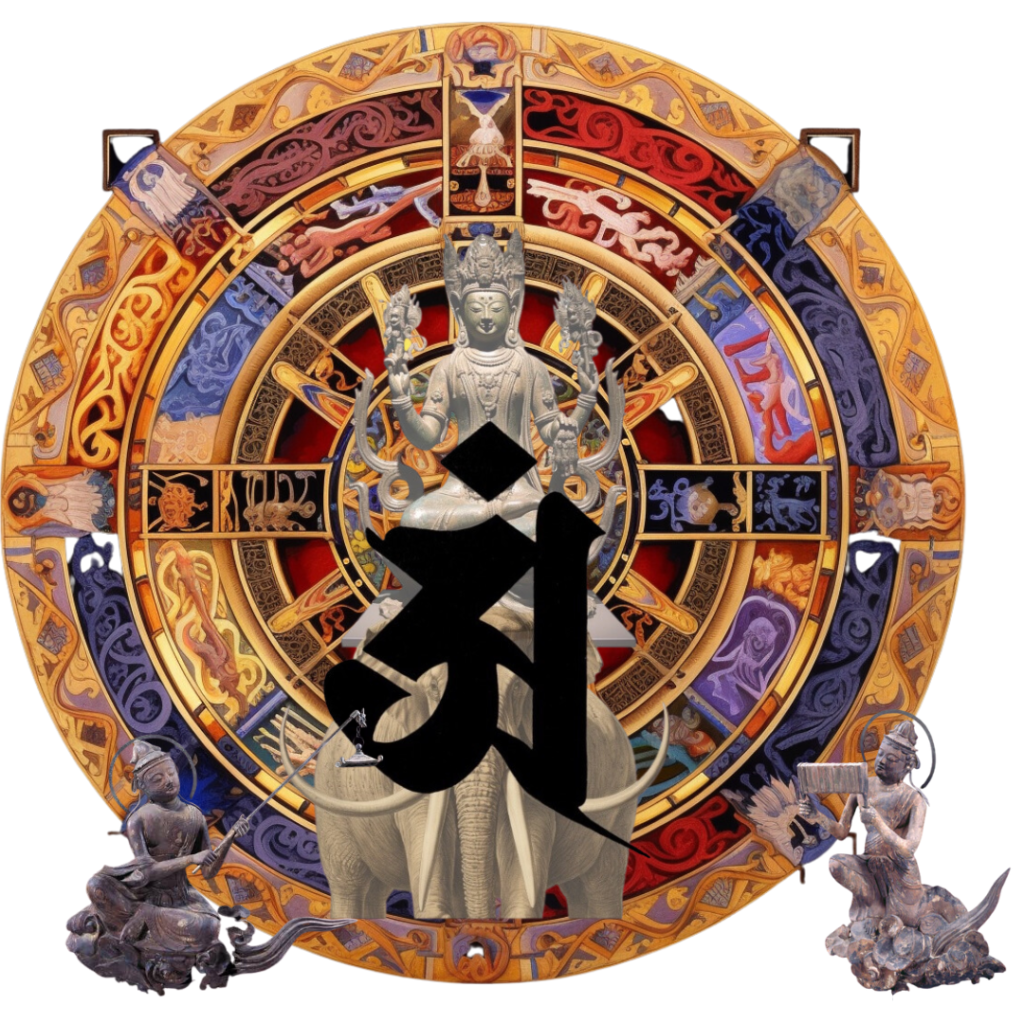The professor �fs text is that only a specific group of people are disabled or sick.
It is not that there is. That is what most people in modern society say.
The Most of the autonomic disorders and cardiac dysfunctions listed here are suppressed in the unconscious conscious layer.
It came from pressure and conflict. In the future, this trend may increase, but the possibility that it will decrease
rare.
If the suppression, conflicts and scars in this unconscious layer are not eliminated or released, the correct
In addition to not being able to enter into thinking, even the training of �gKai L�h in the previous stage cannot be done sufficiently.
Before extinguishing �gannoyance�h or �ganxiety L�h in the unconscious consciousness layer,
It must be released. Otherwise, these repressions, conflicts and scars will be bothersome
I can't help living a very healthy mental life,
The fear of becoming will come out. It can cause various illnesses physically and the worst
In some cases, sudden abnormal behavior or impulsive and morbid behaviors may occur. Very training
It is not.
On the other hand, what kind of training methods will Aragama and Abidalma impose? Try it
Practice methods as seen in Avidaluma
�C Practice in Avidalma
5th place 75 law
There is a training method named �gDaizenchi Law�h.
�hSystematic compilation of what was explained in Argama by Abidharma in the�g Fifth Seventy-Fifth Law �h
Made.
�gThe Seventy-Fifth Seventy-five Law�h is an analysis of seventy-five types of entities that seem to have established this world.
This is the Avidalma taxonomy that divides this into five categories.
The annoyances mentioned above are also classified in the fifth place of the 75th Law. Basic body in Avidalma
Since it is a system, I will keep it next.
The fifth place is
1 Color method = material thing.
2. Mind method = The subject of the heart's work, also known as Shin-Oh.
3. The �gownership method�h is abbreviated as �gheart�h and refers to the function of the heart. This can be divided into the following six types.
Also, among the basic annoyances, dividends are given to the three evils of niece, sleep and niece as follows.
��-�� �E �� �E who �E lyrics �E �� �E dissipation
Meditation-Samurai, Samurai, Trouble, Samurai, Harm, Escape
Scar-Overturn, testimony, lyrics, escape, forgetfulness, injustice
In other words, the three of the cloak, the proof, and the fan will be the two of the niece and niece, and the escape will be the three of the niece, esteem and coffin. Six major
Of the root annoyances, the eyelids, eyes, and scars are considered to have the strongest influence on the anxiety.
The name of the three bad roads L is also from here.
As for the classification of elementary, middle, and large, what is the standard is that 10 such as firewood etc. occur separately.
2 is a minor annoyance, and 2 such as worthless is only moderately unfavorable.
Because it is biased to the heart, it is said that it is very troublesome. This is a reasoned reasoning.
How to stop the above troubles? The training method for that is the same as the heart method
It is the great good land law of Aoi. Let's explain each heart of the Great Zenji Law.
Daizenchi Law
Shin
The freshness of the heart. It is a heart that respects faith and enjoys good deeds.
, And the four truths preached in Buddhism, namely, �gScience of the Four Lords�h and �gSanpo L, ie, Buddha and its teaching,
The relationship between the monk, the work, and the reward, causality,
Say.
Work (dedication)
Diligent, courageous to do and do good.
Discard
�hIt means a heart that is free from personal feelings and calm.
E
�S A heart that feels remorse and is ashamed.
�z I am relieved and shy about teaching and other good people that I am imperfect and immoral.
The It is also an awe-inspiring heart for teaching and teachers.
��
A social position, being aware of yourself as one of the group, and acting in a manner that is not embarrassing
The
Gradual is a heart that is ashamed of yourself against others, and �� is a heart that is ashamed of yourself against others.
MUJI
There should be no waste. Don't be obsessed with position, power, or material.
infinite
Good patience. There is no hatred or anger, but not only that, but it is a heart that actively cares for others.
Harmless
�� It is non-violent and does not harm others, but it is not only that, but it has serious compassion.
Minan
It �fs just a matter of soul and spirit.
�K �� To have good adaptability, always to keep the body light and safe, to accumulate virtue and to follow training
Try to be able to do it.
Persistent
Don't be lazy, don't flow freely, and train yourself and study.
As mentioned above, the heart of this Great Zenji Law will be paid as follows for the heart of trouble.
It is.
Authenticity-Mistrust / Unauthorized Knowledge
1 innocence / cover / proof
��-�� �E ��
Infinity-limited / �| / ��
Employees with one eye failure / forgetfulness
Minan-Gonsen / Tan
Non-dissipation-dissipation / scattering
�� Discarding- �� �� / ��
Harmless-harm
In other words, the practitioner is always paying attention to his / her heart, and when the anxiety is about to move,
Immediately I will counter this with the heart of these great good law and control the heart of annoyance.
The By repeating this, we will finally end up avoiding the anxiety.
Isn't it really a good idea?
But will it work?
The Mahayana Buddhism that appeared later subsided all these troubles into the Six Daikonhon troubles.
�gRokunami honey�h (sixth row) was paid as a control dividend. It is as follows.
��-Cloth enforcement
Limited-insulting
Scar--Tomoyuki (Haruka)
Pride-Obedience
Suspicious progress
Kami-Zen Juku
However, later on, the �gcloth enforcement�h became one. However, emphasizing �gbelief�h
Thus, it became a double-set of devotion and Fuse. It is the most simplified.
Primitive Buddhism is not as easy as it is.
How simple is this?
Let me answer.
Both have major flaws.
Something?
It is a problem of unconsciousness mentioned in the previous chapter.
Both lack this point.
As expected, in primitive Buddhism, trying to deal with unconscious consciousness by entering a soft meditation assumption Yes
However, this is the same as that of people at the time waiting for unconscious people without strong oppression and conflict like modern people.
Moreover, it is possible only because it is a conscientious position as a practitioner.
Because of the wisteria, it is impossible to enter a soft meditation. Even before trying to get in, before reaching the border
Suppression and conflict came out, and it appeared as a ghost phenomenon
It ends up. No, before that, I could endure the �gKai�h training course (although it is a mental and physical adjustment)
It �fs not easy.
In addition, in order to analyze my heart in too detailed detail and severely regulate my mind and behavior,
This is a new repression that causes conflict and complexity in the unconscious class of trainees.
Loit stated that "culture and morality, education and religion are the source of various human complexes."
B, �gObservations and conflicts in our unconscious layers of consciousness, most of the trauma are due to it L and fingers
Although this practice method is exactly what this practice method is, if it is applied one step further, it will be a hit for modern people
Isn't it safe to say that?
This is also true for Mahayana Buddhism. Mahayana Buddhism, a popular religion, succeeded in simplifying the most.
Nevertheless, the biggest mistake of Mahayana Buddhism is that "annoyance" is captured only by surface consciousness.
However, by introducing the �gShin�h, it is possible to achieve various types of suppression and compression in the unconscious conscious layer.
�� While trying to deal with kusu, as I said before, suppression and conflict in the unconscious conscious layer,
The mind resulting from the trauma is an unusual mind that is hurt and distorted. "I don't believe in kami, hotoke, truth, or justice.
It is heart L. Persuading this in various ways, or surrendering, the �greligious
By trying to squeeze �gto try to stir up faith,
Therefore, the wound of mental trauma will be enlarged. Exactly what Freud says, �gsocial sanctions are always religious
It is combined with the lions and blames them so that they can never recover again.
�@�@
�����̂��̕��͂́A����̈ꕔ�̂ЂƂтƂ�������Q���N��������A�a�C�ɂȂ���
����Ƃ����̂ł͂Ȃ��̂ł���B����Љ�ɐ�����قƂ�ǂ̂ЂƂтƂ��������Ƃ����Ă���̂ł�
��B�����ɂ������Ă��鎩���_�o��Q��A�S���@�\�����̂قƂ�ǂ́A���ӎ��̈ӎ��w�ɂ�����}
���⊋�����琶�������̂ł���B����A���̌X���͑��傷�邱�Ƃ������Ă���������Ƃ����\����
�قƂ�ǂȂ��B
�@���́A���ӎ��̈ӎ��w�ɂ�����}���⊋���E���������ł��邢�͉�����Ȃ���A��������i��
�z�j�ɓ���Ȃ������ł͂Ȃ��A���̑O�i�K�́u���k�̏C�s����\���ɂȂ����Ƃ��ł��Ȃ��̂ł���B
���ӎ��̈ӎ��w�ɂ���u�ϔY�v��u���ϔY�k�����ł���O�ɁA�܂��}���E�����E���������ł��邢��
������Ȃ���Ȃ�ʂ̂ł���B�������Ȃ���A�����̗}���⊋���E�����́A�ϔY�E���ϔY�Ƃ�
���т��āA�c�a�I�Ȑ��_��Ԃ��Ђ��N�����A�ƂĂ����S�Ȑ��_�����Ȃǂ��ƂȂނ��Ƃ��ł���
���Ȃ鋰�ꂪ�o�Ă���̂ł���B����͓��̓I�ɂ����܂��܂ȕa�C���Ђ��N���������ɂȂ�A�ň���
�ꍇ�ɂ́A�˔��I�Ȉُ�s����A�Փ��I�ŕa�I�ȍs�����Ƃ�悤�ɂȂ����肷��B�ƂĂ��C�s�ǂ���
�ł͂Ȃ��̂ł���B
�@����ɑ��āA�A�[�K�}����уA�r�_���}�͂ǂ̂悤�ȏC�s�@���ۂ��̂ł��낤���B������݂Ă�
�A�r�_���}�ɂ݂�C�s�@
�@�A�r�_���}�ɂ݂�C�s�@
�@�@�@�܈ʎ��\�ܖ@
�@�u��P�n�@�v�Ɩ��Â���C�s�@������B
�@�A�[�K�}�ɂ����Đ����ꂽ���̂��A�A�r�_���}���u�܈ʎ��\�ܖ@�v�̂Ȃ��ɂƂ����A�̌n�I�ɕ�
���������̂ł���B
�@�u�܈ʎ��\�ܖ@�v�Ƃ����̂́A���̐��̒��𐬗������Ă���Ǝv������̂����\��ɕ��͂��āA
������ܑ�ʂ����A�r�_���}�̕��ޖ@�ł���B
�@�����ɂ��������ϔY�����̌܈ʎ��\�ܖ@�̂Ȃ��ɕ��ނ���Ă���B�A�r�_���}�ɂ������{�I�ȑ�
�n�Ȃ̂ŁA���ɂ������Ă����B
�@�܈ʂƂ����̂́A
�@�P�@�F�@�������I�Ȃ��́B
�@�Q�@�S�@���S�̂͂��炫�̎�̂ŁA�S���Ƃ������B
�@�R�@�S���L�@���S���Ɨ��̂��A�S�̂͂��炫�������B����́A���̘Z��ɕ�������B
�@�܂��A���{�ϔY�̂����A�O�����́A�ÁE���E��ɁA���̂悤�ɔz������Ă���B
�@�Á|���E�~�E�N�E���E���E����
�@�ҁ|�|�E���E�Y�E���E�Q�E����
�@���|���E�E���E����E���O�E�s���m
�@�܂�A���E�E��̎O���ÁE��̓�҂ɁA������ÁE���E�Â̎O�ɒʂ���Ƃ���̂ł���B�Z��
���{�ϔY�̂����ÁE��E���̎O�́A���ϔY�ɑ��čł������e���͂������Ă���ƌ���킯�ŁA�u��
�{�O�����k�Ƃ���������������o�Ă���킯�ł���B
�@������̗ޕʂ͂Ȃɂ���ɂ������̂ł��邩�ɂ��ẮA�|����10�͂��̂��̕ʂɋN���邪�䂦
�ɏ����ϔY�Ɩ��Â��A�������̂Q�́A�s�P�ɂ̂ݕ��邪�䂦�ɒ����ϔY�Ɩ��Â��A�ȋ����̂W�́A
���S�ɕ��邪�䂦�ɑ吏�ϔY�Ɩ��Â���̂��Ƃ���B�܂��Ƃ��k���ɐ��_�������̂ł���B
�@�ȏ�̐��ϔY�������ɂ��Ď~�ł����邩�H�@���̂��߂̏C�s�@���A���Ȃ����S���@�̂Ȃ��ɂ�����
��Ă��釋�̑�P�n�@�Ȃ̂ł���B��P�n�@�̊e�S���ɂ��ĉ�����Ă݂悤�B
�@�@��P�n�@
�@�M
�S�̂���炩���B�M�`���d�A�P�s���y���ސS�ł���B
�@����ƁA�����Ő����l�̐^���A���Ȃ킿�u�l���̗��v�ƁA�u�O��k���Ȃ킿�A���ƁA���̋����ƁA
���̑m�c�A����сA�ƂƁA���̕Ƃ̂������̈����E���ʐ��A�ȏ�̎O�ɂ�������ӂ����m�M��
�����B
�@�@�i���i�j
�@�Εׂł���A�Ȃ��ׂ����Ƃ�A�P�s�ɂ������ėE���Ȃ��Ƃł���B
�@�@��
�@���S���͂Ȃ�A���Âł������̂Ȃ��S�������B
�@�@�q
�@�悭���Ȃ��p����S�B
�@������A���̂����ꂽ�l�ɑ��āA�������s���S�ł���A�s���ł��邱�ƂȂ��A�p����S�ł�
��B����͂܂��A������t�F�ɂ������Ăӂ������h�̐S�ƂȂ�B
�@�@��
�@�Љ�I�ȗ���A�O���[�v�̈�l�Ƃ��Ă̎��������o���A�p���������Ȃ��悤�ɍs�����邱�Ƃł�
��B
�@�Q�͑��ɑ��Ď�����p����S�A���͎������g�ɑ��Ď�����p����S�ł���B
�@�@����
�ނ��ڂ�̂Ȃ����ƁB�n�ʁE���́E�����ȂǂɎ���������Ƃ��ꂽ�肵�Ȃ��B
�@�@����
�@�悢�E�ϗ́B�����݂�{��̂Ȃ����Ƃł��邪�A���ꂾ���łȂ��A�ϋɓI�ɑ�����������S�ł�B
�@�@�s�Q
�@��\�͂ł���A�����Q���Ȃ����Ƃł��邪�A���ꂾ���ł͂Ȃ��A�Ă�����S�������Ƃł���B
�@�@�y��
�@���Ȃ��Őg�S���N�ł��邱�Ƃł���B
�@�悫�K�����������Ƃł���A�˂ɐg�S���y�����K�ɂ������A����ς݁A�C�s�ɂ����������Ƃ�
�ł���悤�ɐS�����邱�Ƃł���B
�@�@�s����
�@�Ȃ܂����A���c�ɗ���Ȃ��ŁA�C�s��w�ɂ͂��ނ��ƁB
�@�ȏ�ł��邪�A���̑�P�n�@�̐S���́A���ϔY�̐S���ɂ������āA���̂悤�ɑΏƔz��������
�ł���B
�@�@�M�\�s�M�E�s���m
�P�����E���E��
���Á|�ÁE�~
�@�@�����|���E�|�E��
�@�@�P��ӁE���O
�@�@�y���\�咾�E�Y
�@�@�s����|����E�U��
�@�@�́|�����E��
�@�@�s�Q�|�Q
�@�܂�A�C�s�҂́A�˂Ɏ����̂�����ɒ��ӂ��͂���Ă��āA�ϔY�̐S�����������Ƃ���Ƃ��A
�������ɂ�����P�n�@�̐S�����ȂĂ���ɑR���A�ϔY�̐S���𐧈����Ă��܂����Ƃ����̂ł�
��B��������肩�������Ƃɂ��A���ɂ͔ϔY�̐S�����N����ʂ悤�ɂ��Ă��܂����Ƃ����킯��B
�@�Ȃ�قǎ��ɂ悭�l�������̂ł͂Ȃ����B
�@�������������܂������ł��낤���H
�@�̂��ɂ����ꂽ��敧���́A�����̐��ϔY�����ׂĘZ�卪�{�ϔY�ɂ����߂Ă��܂��āA�����
�u�Z�g�����v�i�Z�x�̍s�j��ΏƔz�������B���̒ʂ�ł���B
�@�@�Á\�z�{�s
�@�@���[�E�J�s
�@�@���\�|�q�d�s�i�ʎ�j
�@�@���|�����s
�@�@�^�\���i�s
�@�@�����|�T��s
�@�������A����ɂ̂��ɂ������āA�u�z�{�s�v�ЂƂɂ��ۂ�悤�ɂȂ����B�������A�u�M�v��������
�āA�M�S�ƕz�{�Ƃ̓�{���ĂɂȂ����̂ł���B�ł��ȕ։����ꂽ�킯�ł���B
�@���n�����̏C�s�̈ꋓ�ꓮ������邪���ɂ��Ȃ����̂܂�悤�ȏC�s�@�ɂ���ׂāA��
�������P�������ꂽ�킯�ł��邪�A����͂ǂ��ł��낤���H
���������悤�B
�@�ǂ���ɂ��傫�Ȍ��ׂ�����̂ł���B
�Ȃɂ��H
�@�����̏͂ŏq�ׂ����ӎ��̈ӎ��̖��ł���B
�@�ǂ�������̓_�������Ă���B
�@�������Ɍ��n�����ł́A�ӂ����ґz��ɓ��邱�Ƃɂ���Ė��ӎ��̈ӎ��̏��������悤�Ƃ��Ă͂�
��E�������A����́A����l�̂悤�Ȃ悢�}���⊋���̂Ȃ����ӎ��w��҂��������̐l�тƂ́A��
�����o�ƏC�s�҂Ƃ����߂��܂ꂽ����ł��邩�炱���\�Ȃ̂ł����āA����l�͂��̎��}���⊋
���̂��߂ɁA�ӂ����ґz��ɓ��邱�Ƃ��ł��Ȃ��̂ł���B���낤�Ƃ��Ă��A�ӂ������n�ɒB����O
�ɁR�}���⊋������яo���Ă��āA�ߗ쌻�ۂ�A�u�L�b�l�߂��v�I���ۂƂȂ��Ă�����A���܂���
���܂��̂ł���B����A����ȑO�ɁA�u���v�̏C�s�ے��i����͐S�g�Ɗ��̒����ł��邪�j�ɑς����
���A���ނ��Ă����Ă��܂��̂��B
�@����ɂ܂��A���܂�ɂ��k���ڍׂɂ�����͂��Ă��т��������̐S�ƍs�����K�����邽�߁A��
�ꂪ�����炵���}���ƂȂ��āA�C�s�҂̖��ӎ��w�Ɋ�����R���v�����N�X�����߂�̂ł���B�t
���C�g�́A�u�����Ɠ����E����E�@�����l�Ԃ̂��܂��܂ȃR���v���b�N�X�̌���ƂȂ��Ă���v�Əq
�ׁA�u����ꂪ���ӎ��̈ӎ��w�Ɏ��}���Ɗ����A���_�I�O���̂قƂ�ǂ͂���ɂ����̂��k�Ǝw
�E���Ă��邪�A�܂��ɂ��̏C�s�@�����A�K�p���������܂�ƁA����l�ɂƂ��Ă���ɂ�������̂�
�Ȃ�Ƃ����Ă悢�̂ł͂Ȃ����B
�@����͑�敧���ɂ��Ă������邱�ƂŁA��O�@���ł����敧���́A�ł��ȗ������邱�Ƃɐ���
�͂�������ǂ��A��敧���̍ő�̂���܂�́A�u�ϔY�v��\�ʈӎ��݂̂łƂ炦�Ă��邱�Ƃł���B
�����Ƃ��A�ӂ����u�M�v�ɓ��点�邱�Ƃɂ��A���ӎ��̈ӎ��w�ɂ����邳�܂��܂ȗ}����R���v��
���N�X���������悤�ƍl����̂ł��낤���A�O�ɏq�ׂ��ʂ�A���ӎ��̈ӎ��w�ɂ�����}���⊋���A
���_�O�����琶����������́A�����c�ُ�Ȃ�����Łu�J�~���z�g�P���^�����������M���Ȃ�
������k�Ȃ̂ł���B������A���܂��܂ɐ������A���邢�͐ܕ��ȂǁA�t���C�g�̂����u�@���I����
���������邱�Ƃɂ���āu�M�S���ӂ��߂悤�Ƃ��邱�Ƃ́A�܂��܂����̃R���v�����N�X���ӂ�
�߁A���_�I�O���̏����g�傷�邱�ƂɂȂ�B�܂��Ƀt���C�g�̂����u�Љ�I���ق͂˂ɏ@���I����
���Ƒg�ݍ��킳���Ă���A�l�Ԃ��x�Ƃӂ����ї�������Ȃ��قǐӂ߂����ȂށB
�y���̃J�e�S���[�̍ŐV�L���z
-
no image
-
no image
-
no image
-
no image
-
no image





